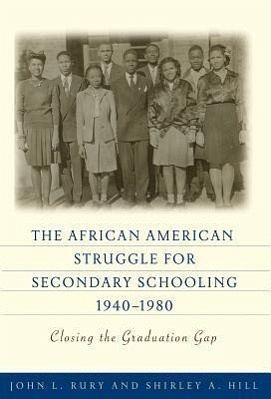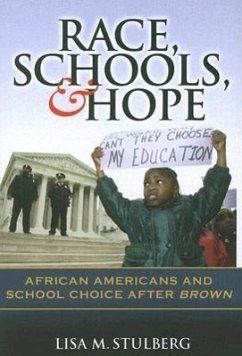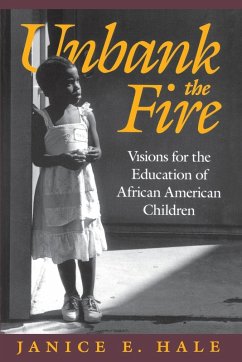
The African American Struggle for Secondary Schooling, 1940-1980
Closing the Graduation Gap
Versandkostenfrei!
Versandfertig in über 4 Wochen
39,99 €
inkl. MwSt.

PAYBACK Punkte
20 °P sammeln!
This is the first comprehensive account of African American secondary education in the postwar era. Drawing on quantitative datasets, as well as oral history, this compelling narrative examines how African Americans narrowed the racial gap in high school completion. The authors explore regional variations in high school attendance across the United States and how intraracial factors affected attendance within racial groups. They also examine the larger social historical context, such as the national high school revolution, the civil rights movement, campaigns to expand schooling and urging you...
This is the first comprehensive account of African American secondary education in the postwar era. Drawing on quantitative datasets, as well as oral history, this compelling narrative examines how African Americans narrowed the racial gap in high school completion. The authors explore regional variations in high school attendance across the United States and how intraracial factors affected attendance within racial groups. They also examine the larger social historical context, such as the national high school revolution, the civil rights movement, campaigns to expand schooling and urging youth to stay in school, and Black migration northward. Closing chapters focus on desegregation and the "urban crisis" of the 1960s and 1970s that accelerated "White flight" and funding problems for urban school systems. The conclusion summarizes these developments and briefly looks at the period since 1980, when secondary attainment levels stopped advancing for Blacks and Whites alike. Book Highlights: * A comprehensive history, drawing on statistical analysis, archival research, and interviews with African Americans who attended school in the 1940s and 1950s. * Lessons from the past, showing how parents and local communities played the most direct and dynamic role in the fight for access to education. * Today’s major challenges, including the growth of inner-city poverty and changing family structures.












